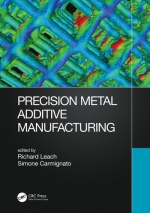Tab Article
Additive manufacturing (AM) is a fast-growing sector with the ability to evoke a revolution in manufacturing due to its almost unlimited design freedom and its capability to produce personalised parts locally and with efficient material use. AM companies, however, still face technological challenges such as limited precision due to shrinkage, built-in stresses and limited process stability and robustness. Moreover, often post-processing is needed due to high roughness and remaining porosity. Qualified, trained personnel are also in short supply.
In recent years, there have been dramatic improvements in AM design methods, process control, post-processing, material properties and material range. However, if AM is going to gain a significant market share, it must be developed into a true precision manufacturing method. The production of precision parts relies on three principles:
- Production is robust (i.e. all sensitive parameters can be controlled).
- Production is predictable (for example, the shrinkage that occurs is acceptable because it can be predicted and compensated in the design).
- Parts are measurable (as without metrology, accuracy, repeatability and quality assurance cannot be known).
AM of metals is inherently a high-energy process with many sensitive and inter-related process parameters, making it susceptible to thermal distortions, defects and process drift. The complete modelling of these processes is beyond current computational power, and novel methods are needed to practicably predict performance and inform design. In addition, metal AM produces highly textured surfaces and complex surface features that stretch the limits of contemporary metrology. With so many factors to consider, there is a significant shortage of background material on how to inject precision into AM processes. Shortage in such material is an important barrier for a wider uptake of advanced manufacturing technologies, and a comprehensive book is thus needed.
This book aims to inform the reader how to improve the precision of metal AM processes by tackling the three principles of robustness, predictability and metrology, and by developing computer-aided engineering methods that empower rather than limit AM design.


